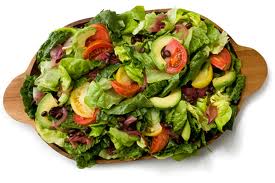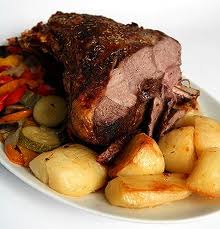The humble bay leaf has been with us since time immemorial. But it amazes me of how many cooks that I know who relegate it to a second tier status and use it infrequently, if ever. Bay leaves are primarily considered a spice but, to my mind, the bay leaf should be up there at the top of the condiment pyramid along with salt and pepper. They’ve been in use since the time of ancient Greece and Rome. Its leaves constituted the wreaths of laurel that crowned victorious athletes in the ancient Olympics. But it’s not only cuisine; they’ve also been used in folk medicine to help relieve such ailments as diabetes, colds, high cholesterol, asthma, constipation, gas and bloating.
Of course, it goes without saying, one of their great values is enhancing recipes. For example, when making a meat sauce with ground meat, add four or six bay leaves into the oil that cooks the onion and garlic at the beginning. Then add the meat and the rest of the ingredients, and continue cooking as you would a regular sauce. Or when grilling Shiskabab (kebabs), soak bay leaves in water, them skewer them on directly next to the chicken, lamb, beef, veggies. etc. Then grill as you would normally. Or you can wrap a whole, seasoned chicken or chicken parts in foil with a carpet of toasted bay leaves on top and on the bottom. Seal it and cook in a slow oven. Finally, you can boil bay leaves in water to make a tea that helps digestion.
As noted above, there are myriad bay leaf recipes. My favorite simply involves rice and beans, a dish common to Latino cooking. In this case, the bay leaves give an interesting twist to the dish, and make the rice and beans a glorious endeavor.
Note that, with the beans, you can use black beans, red beans, white beans, pinto beans or even back-eye peas. Also, I’ve taken a leaf from Mexican cooking and add Mexican crème or cream fraiche to the recipe. I find that Mexican crème is easier to prepare than cream fraiche, which is a more involved recipe. For Mexican crème: In a mixing bowl, combine 1 cup heavy cream, 1 tablespoon sour cream, 1 tablespoon freshly squeezed lime juice, and a dash of salt. Whisk for a minute or so. Cover loosely with plastic wrap and let rest on the counter for four hours during which time it will thicken. That’s it. When serving, you can top off the beans with the crème.
RICE AND BEANWITH BAY LEAVES
To make the rice:
Ingredients:
2 cups long grain rice
Water to cover rice
3 tablespoons olive oil
Salt to taste
3 bay leave
Small piece of cinnamon stick
6 cardamom pods
1 chicken bouillon cube
Instructions:
1. Wash rice under cold running water and drain to get rid of starch. The way I do this (wash the rice) is to place rice in a pot with water to cover. Let it sit for 3-4 minutes, then drain and rinse again in a colander until the water runs clear. Friends ask me, why do this? Simple, the rice will cook to perfection.
2. Heat olive oil in a heavy kettle or pot. Add rice and stir until grains are opaque.
3. Add water to cover by ¼ to ½ inch. Add salt, bay leaves, cinnamon stick and cardamom pods.
4. Bring to a boil, add bouillon cube, cover and simmer on low heat until water is absorbed, usually 20-39 minutes. Remember that, when serving with the beans, remove and discard cinnamon stick and cardamom pods.
To make the beans:
Ingredients:
3 tablespoons olive oil
1 medium onion, peeled and chopped
2 cloves garlic, peeled and minced
3 bay leans
2 (15-oz.) cans of black beans
I cup fresh chopped tomatoes
½ cup fresh chopped cilantro
Instructions:
- While rice is cooking, heat olive oil in a large skillet or frypan over medium heat.
- Add onion and garlic and sauté for about 2 minutes.
- Add bay leaves and continue sautéing until onions are caramelized.
- Add beans, tomatoes and cilantro. Lower heat to simmer and continue cooking, stirring, for 5 minutes more. Serve over rice and topped with the Mexican crème.
Yield: 4 servings for big eaters, 6 servings for light eaters.


 Sofrito is ubiquitous in Caribbean cooking. One could safely say that Puerto Rican cuisine would be wanting without it. It is an aromatic mix of herbs and spices that is a base for cooking countless criollo dishes. This concept can be found in other cultures as well. One example is the Indian mix called garam masala which is also used as a base flavoring. Or kimchi, the fermented cabbage condiment, so popular in Korean cooking. The word sofrito is a generic term that has no correct English translation. “Frito” in Spanish means fried. Sofrito could be taken to mean stir-fried. Although this would not be entirely accurate. As the recipe shows, sofrito can be whipped up in a few moments’ time in a blender or food processor. And it can be stored in a closed tight jar the refrigerator for three to four days or, in the freezer compartment, indefinitely.
Sofrito is ubiquitous in Caribbean cooking. One could safely say that Puerto Rican cuisine would be wanting without it. It is an aromatic mix of herbs and spices that is a base for cooking countless criollo dishes. This concept can be found in other cultures as well. One example is the Indian mix called garam masala which is also used as a base flavoring. Or kimchi, the fermented cabbage condiment, so popular in Korean cooking. The word sofrito is a generic term that has no correct English translation. “Frito” in Spanish means fried. Sofrito could be taken to mean stir-fried. Although this would not be entirely accurate. As the recipe shows, sofrito can be whipped up in a few moments’ time in a blender or food processor. And it can be stored in a closed tight jar the refrigerator for three to four days or, in the freezer compartment, indefinitely. Pasteles are a singular creation made from common ingredients: root plants stuffed with meat. The meat is usually pork, but it can also be chicken or turkey. At home it’s prepared only on the most special occasions. When I returned home from Vietnam this was the first dish my mother made on honor of my arrival. If you’re traditional you have to use plantain leaves to wrap the thing. If they can’t be found, then wax paper will do. Plantain leaves are abundant in Caribbean and Asian markets. These days they come frozen wrapped in bundles of 12 or more. Believe me, there is a difference between pasteles made with plantain leaves and those wrapped in wax paper.
Pasteles are a singular creation made from common ingredients: root plants stuffed with meat. The meat is usually pork, but it can also be chicken or turkey. At home it’s prepared only on the most special occasions. When I returned home from Vietnam this was the first dish my mother made on honor of my arrival. If you’re traditional you have to use plantain leaves to wrap the thing. If they can’t be found, then wax paper will do. Plantain leaves are abundant in Caribbean and Asian markets. These days they come frozen wrapped in bundles of 12 or more. Believe me, there is a difference between pasteles made with plantain leaves and those wrapped in wax paper.  Pasteles are a singular creation made from common ingredients: root plants stuffed with meat. The meat is usually pork, but it can also be chicken or turkey. At home it’s prepared only on the most special occasions. When I returned home from Vietnam this was the first dish my mother made on honor of my arrival. If you’re traditional you have to use plantain leaves to wrap the thing. If they can’t be found, then wax paper will do. Plantain leaves are abundant in Caribbean and Asian markets. These days they come frozen wrapped in bundles of 12 or more. Believe me, there is a difference between pasteles made with plantain leaves and those wrapped in wax paper.
Pasteles are a singular creation made from common ingredients: root plants stuffed with meat. The meat is usually pork, but it can also be chicken or turkey. At home it’s prepared only on the most special occasions. When I returned home from Vietnam this was the first dish my mother made on honor of my arrival. If you’re traditional you have to use plantain leaves to wrap the thing. If they can’t be found, then wax paper will do. Plantain leaves are abundant in Caribbean and Asian markets. These days they come frozen wrapped in bundles of 12 or more. Believe me, there is a difference between pasteles made with plantain leaves and those wrapped in wax paper.









![Reblog this post [with Zemanta]](https://img.zemanta.com/reblog_e.png?x-id=70c36c4e-2915-4a2d-88b1-0a03ba16309b)


![Reblog this post [with Zemanta]](https://img.zemanta.com/reblog_e.png?x-id=6d3732b8-04da-476e-8b28-23a001f3d79e)